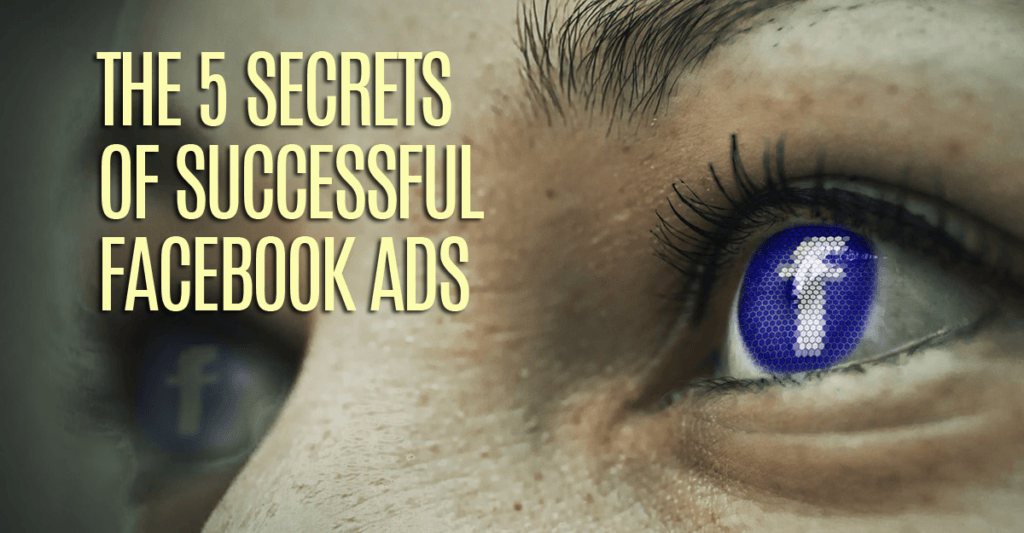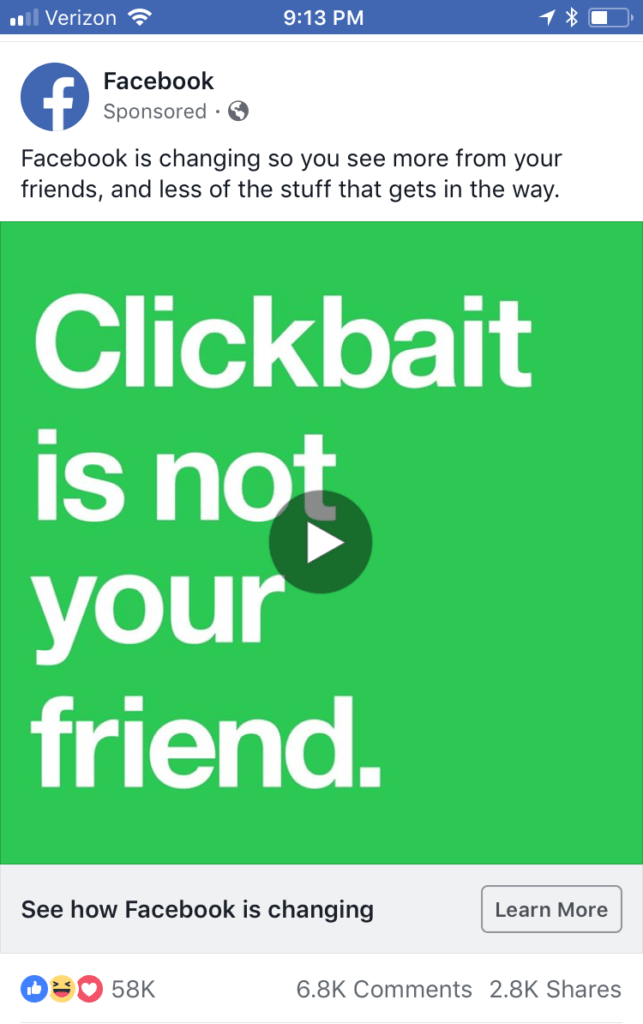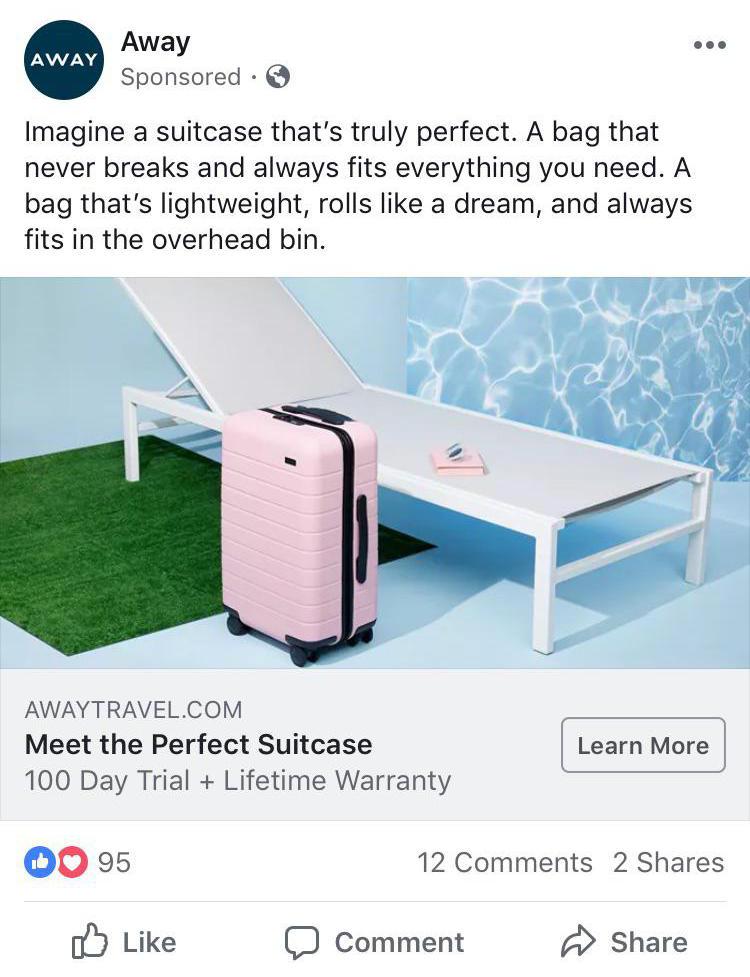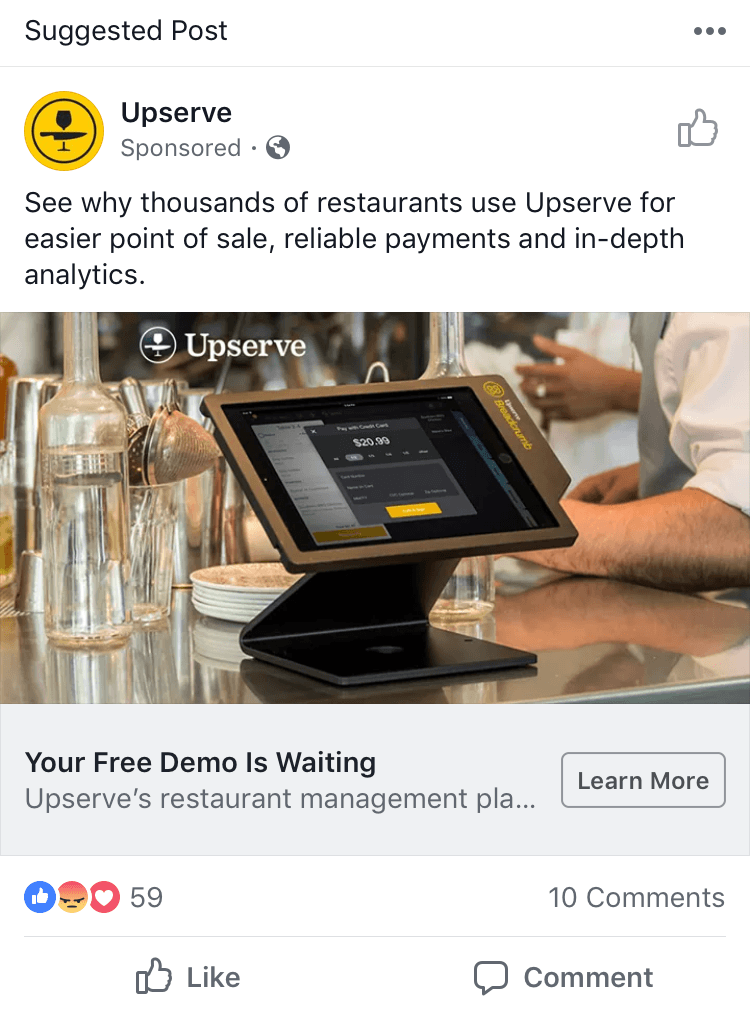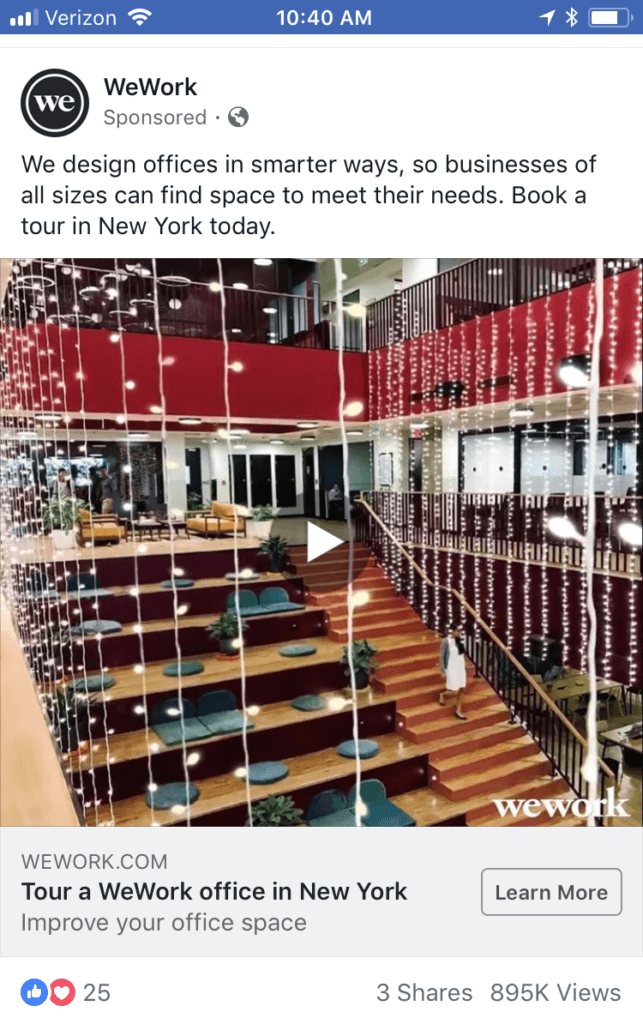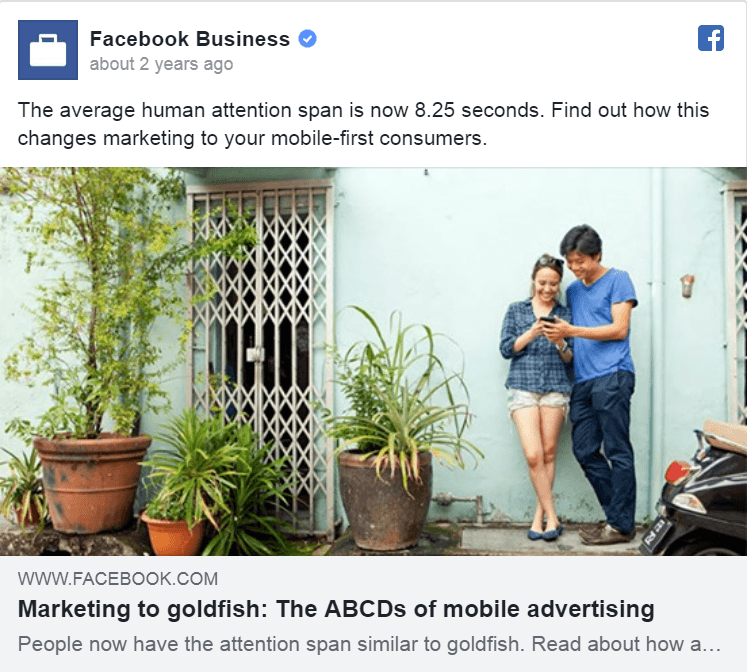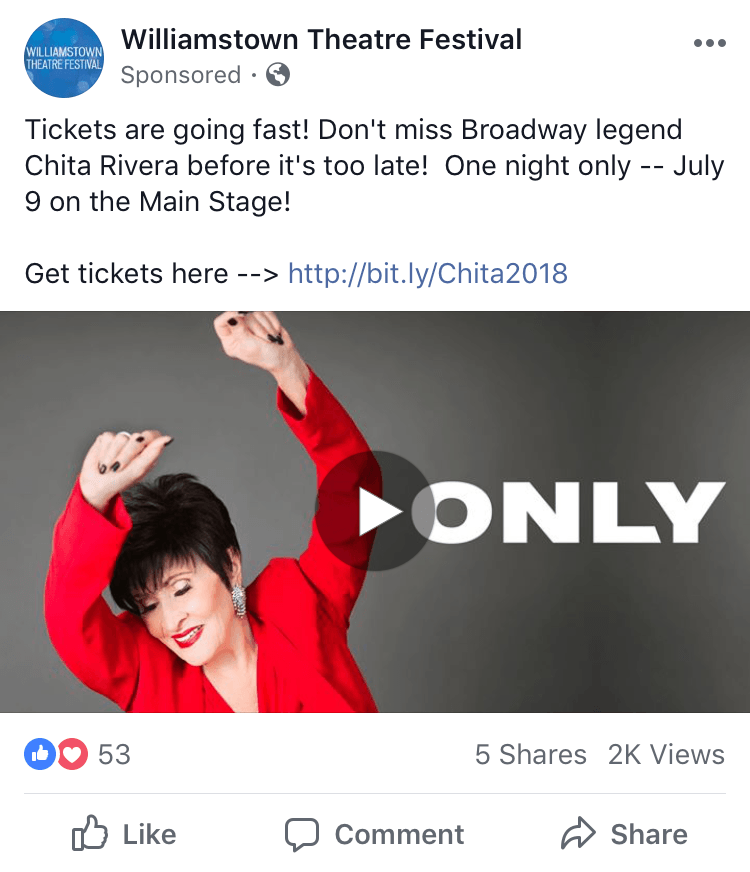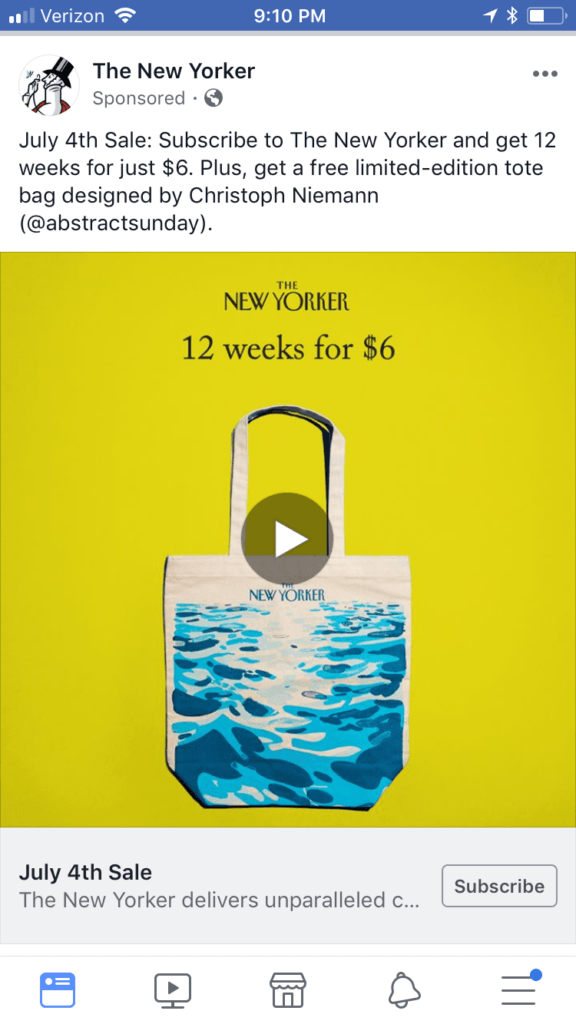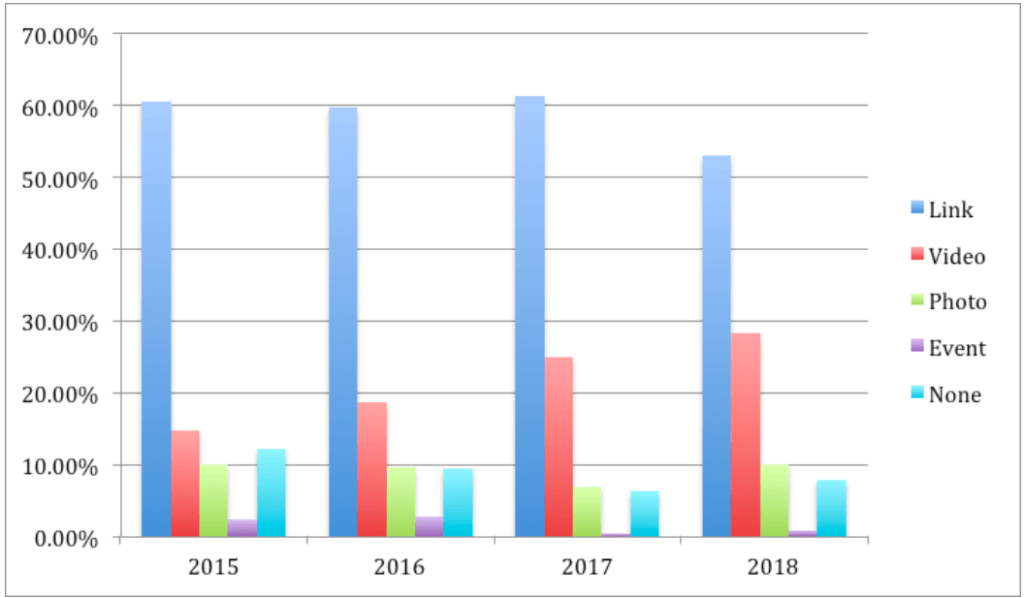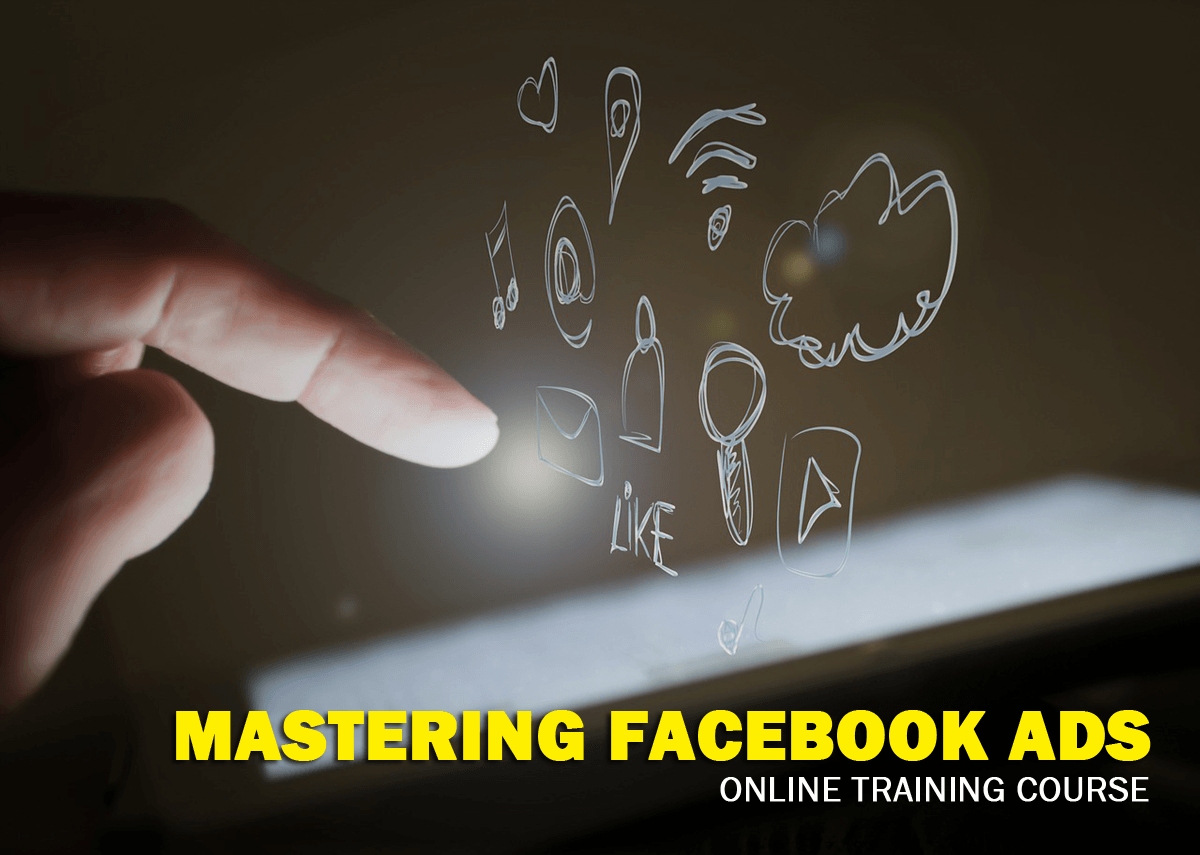What makes a successful Facebook Ad in 2018?
The good news is, we don’t have to guess. AdEspresso has analysed 752,626 Facebook ads, crunched plenty of numbers and emerged with the five key elements of successful Facebook Ads:
In 2018:
- The length of ad text has increased.
- Link descriptions are shorter.
- There has been an uptick in brands that link to specific landing pages.
- The top five CTAs in 2018 and how brands’ usage of CTAs have increased.
- Companies are using a greater variety of Ad types.
The data below, from more than three years of research, will help marketing teams of all sizes improve their ROI.
Now, for the results!
1) Headline Length Is 5 Words on Average, but Ad Text Has Increased
The message is tried and true: A five-word headline is the perfect length. What has shifted over time, however, is the amount of ad text:
Inching up from 14 words on average in 2015 to 19 in 2018, brands have decided to squeeze more information into this initial field.
This tells us that marketers (1) believe viewers will read more up top and (2) that they’re homing in on content that best hooks viewers’ attention.
Who better to illustrate this than Facebook itself?
A clear, no-nonsense (and five-word) headline, “See how Facebook is changing,” paired with 20 words of ad text is the recipe for a perfect Sponsored Post.
In the text itself, we see Facebook doing away with regular punctuation and grammar rules — keeping it chill and relatable.
In a time of heightened security risks, particularly around consumer data, if, like Facebook, you store a lot of personal information, it’s absolutely critical to keep an open line of communication with all of your stakeholders — yes, even in your Sponsored Posts!
Although the average length for ad text has increased, it’s still important to find a sweet spot between a catchy description and staying concise.
The travel brand Away struggles with this:
Although the company nails their “Meet the Perfect Suitcase” headline (again — nothing extra, four words, and in line with Facebook’s own recommendation of 25 characters), the ad text is repetitive and quickly becomes boring after the first sentence.
Sticking to the 19-word median will help you stay on point and choose your words carefully, making sure nothing escapes viewers’ notice.
Here are some additional proven tactics for crafting the best headlines:
- Use numbers at the beginning of your headline.
- Create a sense of urgency with limited-time offers.
- Be clear about your offer (avoid being too vague).
- Ask questions that people want to be answered.
Overall, remember to keep your text clear, concise, and relaxed. While ad text has expanded, the most successful posts are still direct and succinct.
2) Link Descriptions Have Become Shorter
In 2015, the average link description was a whopping 18 words. Three years later, it has been whittled down to 13.
Why is this happening? To shed some light, let’s study an example of a link description that doesn’t work:
Well exceeding Facebook’s 30-character suggestion, the link description is too verbose and trails off without enough information to prompt the viewer to click the “Learn More” CTA.
Also, it doesn’t add any new information.
Upserve has already mentioned its restaurant management software in the ad text. The link description simply takes up space and makes the post feel crammed.
In contrast, WeWork nails it with a shorter link description that packs the most important information into the space provided.
Although it is below the 13-word average, this four-word link description underscores how less is more.
Facebook has even come out and stated that the average human attention span is just over 8 seconds.
Take this to heart, and don’t push your viewers’ limits with run-on sentences.
3) More Ads Are Using Specific Landing Pages
In 2015, marketers incorporated specific links for viewers in 88.7% of Facebook ads. While the result has fluctuated a bit in the past three years, the overall trend has been upward, with close to 90% of Facebook ads highlighting page links in 2018.
Including landing pages makes a post more direct and removes the effort of additional research for the viewer. Given the heightened attention to ad text in recent years (see Result #1), incorporating your link directly into this field is a great option!
You don’t have to be a big corporation to adopt professional tactics. Above, a small nonprofit, the Williamstown Theatre Festival, displays expert aesthetics by placing its link description front and center.
Pro Tip: Using bitly.com will shorten a longer url into a bite-size piece to fit your word count.
While landing pages are almost always helpful, they’re critical if you’re running Facebook Ads with the objective of lead generation, video views, or conversions. You need to be sure your viewer doesn’t just absorb information from your post but actually takes action!
4) Top 5 CTAs: Learn More, None, Shop Now, Sign Up, Book Travel
Choosing the perfect Call to Action (CTA) is more difficult than you’d imagine, which is a major reason why this category has seen so many changes over the years. Marketers have experimented with several different kinds of CTAs (including none at all). At the same time, Facebook constantly rolls out new options to test.
Facebook has three main types of ads that are aimed at increasing awareness, consideration, or conversion. Each of these has its own set of CTAs. While some, such as “Comment,” overlap among categories, others, like “Play Game,” are unique to a particular channel.
While the above CTAs are vetted to help drive success on the majority of Facebook ads, branching out and using CTAs that didn’t make the top-five list could set you apart in your viewers’ News Feeds.
The New Yorker could have gone with a simple “Shop Now” or “Learn More” — but the “Subscribe” CTA is more specific to its objective and is unique among the majority of other offers. It adds an artistic flair to an already-creative brand.
There are more than 30 unique options for Facebook ad CTAs. Here are a few of the quirkier ones:
- Listen Now
- Get Directions
- Donate Now
- Send Message
- Image Click (where the image itself is the CTA)
Whether you go with a vetted approach or one that’s more daring will depend on your brand, your audience, and your ad budget — but having the correct data should always be your first step.
5) Companies Are Using a Greater Variety of Ad Types
Finally, more companies are deciding to get creative with the new ad offerings Facebook keeps rolling out.
Clearly, video ads have soared in popularity, while links, photos, and events have remained relatively steady or declined.
For more visual learners, another way to view the breakdown of ad types is below:
While traditional links still represent the majority, they are no match for the rapid rise of the video format.
There are so many ways to get creative and stand out with your video ads. And now is clearly the perfect time.
A few ideas from the pros:
- Put the good stuff into the first 5–10 seconds.
- Work in primary colors (red, blue, yellow).
- Incorporate scrolling text.
While you should invest in learning the video format, don’t discount photo ads (particularly with all of the new image technology), which have remained a steady bet since 2015.
If you’d like to know more about effective Facebook advertising in New Zealand, check out our “Mastering Facebook Ads” online training course:
In this nine-part online training course, we will take you step-by-step through what you need to know to understand and master Facebook Advertising.
Lesson One: Getting Started
In this lesson we introduce you to the principles and practices of Facebook Advertising, and take you on a tour through Facebook Ads Manager (which is the tool that most of Facebook’s two million advertisers use to advertise on Facebook). We also discuss:
- why you shouldn’t just boost your Facebook posts and expect to get effective results
- the key differences between Google Adwords and Facebook Ads and why they matter to you
- the limitations faced by New Zealand advertisers compared with our foreign counterparts
- how (if you’re not careful) you can end up competing with yourself and drive up your Facebook advertising costs
- an analysis of the New Zealand Facebook marketplace
- why mobile is so important with Facebook (and why that matters to you)
Lesson Two: Setting Campaign Objectives
When you first start an advertising campaign on Facebook, you’ll be offered a range of possible objectives for your advertising. In this lesson, we deconstruct each of the offers on tap, consider how they might help or hinder your campaign and review:
- the surprising importance of Awareness campaigns for your future success
- why you shouldn’t just go straight after Conversion and Sales objectives
- when, where and how you should trust Facebook to meet your objectives (and when you shouldn’t)
Lesson Three: Targeting
Facebook has such rich data about its users that you can use to laser-focus your advertising on the people that you most want to target. It’s both an asset and a liability, because if your targeting is based on assumptions, you might be advertising to exactly the wrong people. In this lesson, we explore:
- the comprehensive sets of filters available to you to segment your audience
- the enhanced capabilities that are NOT available to NZ businesses (and how you can compensate instead)
- how you can reach out to your own customers and prospects through Facebook Custom Audiences
- the surprising implications of Europe’s new GDPR (General Data Protection Regulation, introduced in May 2018) for New Zealand targeting on Facebook
Lesson Four: The Offer
All offers are not alike on Facebook. To understand what works on NZ’s most popular social network, we need to review some of the key elements of social shopping. In this lesson, we review:
- The 10 most important factors that consumers look for when deciding whether or not to buy from you (and how you can improve each aspect)
- The five most attractive offers that you can make, to close a sale
- The six factors that consumers are most likely to consider when comparison shopping
- The most popular items that Kiwis are buying online these days
- The four most-important offerings you can provide that will have consumers recommending you to their friends
- The five most likely reasons why consumers abandon their shopping cart in the middle of a purchase
Lesson Five: Advertising Creative
By now, you’ll be unsurprised to learn that all advertising is not alike on Facebook. In Lesson Five, we review the ads that work (and those that don’t) on Facebook. Included in this lesson:
- identifying the most effective types of visual elements for Facebook Ads
- when and how you should use video in your Facebook Ads
- determining the copy elements that will work best to meet your objectives
- establishing an effective Call to Action
- considering the most important components of the Landing Pages (where you send people after they click on your ads)
Lesson Six: Remarketing and the Facebook Pixel
Remarketing — adding a Facebook pixel to a website outside Facebook, so that Facebook can track the journeys of those who click on your ads — is the key to truly understanding and segmenting your prospects. In this lesson, we give you a solid understanding of the benefits of remarketing and share how you can:
- use remarketing to truly customise your Facebook Ads for your visitors
- reach out again to prospects who visited your website but didn’t buy
- follow up with prospects who made an enquiry or downloaded an ebook but have yet to buy
- avoid wasting money, by not advertising again to those who did buy
- remarket to visitors who have already liked your Facebook page
Lesson Seven: Measuring the Performance
Facebook Advertising creates a LOT of data, and the sheer scale of the information can be overwhelming. In Lesson Seven, we show you how to focus in on the key metrics that matter, and how to interpret that information to guide your future activities. In particular, we recommend that you track:
- who saw your Facebook Ads
- who clicked on those ads
- the percentage who then took the desired action
- the comparative Costs Per Click and Costs Per Conversion (and how to evaluate the effectiveness of your ads as a result)
- the Lifetime Value of your Facebook-generated customers
Lesson Eight: Testing
Testing should be an essential part of any Facebook Advertising campaign. In this lesson we explain how to set up robust testing procedures for your campaigns and what represents appropriate sample sizes for each test. We also discuss:
- which elements you might test (and why)
- how and why you should only test a single element at any time
- how to determine which variant is working and which is not (hint: it can be more complex than you think)
- how much data you need to determine the outcome of a test
Lesson Nine: Creating Effective Facebook Posts
Finally, we review the types of posts that you should consider promoting with Facebook Ads, accompanied by a wide range of examples, including:
- Plenty of stories from local and international businesses who are using Facebook effectively
- The hotel chain that has twice as many people talking about it as the chain has followers
- The radio station that has truly mastered the art of Facebook
- Examples of posts that really tug at the heartstrings
- The Facebook page that had 247,756 Facebook likes but managed to get 775,600 people talking and 160,000 people sharing
- Practical posts that get people sharing
COURSE CREATION AND TUTORING
This course has been created and is tutored by Michael Carney, longtime marketer and author of six books (including the top-selling book “Trade Me Success Secrets”, now in its Second Edition). Michael is also the creator of a number of other online courses and consults on many digital business initiatives.
This is an online course, conducted on a web-based e-learning software platform, enabling course participants to proceed at their own pace, accessing materials online. This particular eCourse provides content in a variety of multimedia forms, including videos, slideshows, flash-based presentations and PDF files. No special software is required to participate.
Course lessons will be provided in nine parts, for participants to access in accordance with their own timetables.
CUSTOMER FEEDBACK
Feedback from previous Social Media Marketing online training course participants:
- “this was the best professional development course I have done in many years” – Mark R, senior Agency Exec responsible for social media
- “thought the information within was outstanding” – Ed P, General Manager
- “What I loved was that I started with a fairly rudimentary understanding of social media but have learned a lot – including where to find more information as I need it.” – Fiona W, Marketing Manager
- “I found it relevant, informative, topical, insightful and a bloody good read. It’s never evangelical, too techy, patronising, assumes that you know too much or too little about digital and has a warm sense of humour in the communication throughout which helped faciliate the learning process for me.” — Adrienne B, new media senior executive
- “Thanks for pointing me in the direction of this course! It’s been extremely enlightening” — Shayne P, design agency director
- “Rapt with what I have seen of the course” — Julia R, fashion editor
- “I’m really enjoying the course – learning a lot – and I know the two friends I persuaded to join us are also loving it.” — Lavinia C, designer
- “Am thoroughly enjoying the content!” – Kara B, magazine co-ordinator
- “I completed the first lesson today and found it really interesting and love the interaction already! I am so looking forward to the second lesson already …” — Annette B, public relations director
- “I was already engaging with social media and have been doing so for about 6 years or so. But, did I know how to use social media in a marketing and business sense? No, I simply did not. This course was a great way to show me how to do that.” — Sheryl K, online marketer
WHO SHOULD TAKE THIS COURSE
Any Business Owner or Manager, Marketing, Advertising, PR or Communications professional who, while they may have a fair knowledge of Facebook, realises that they need to know more about Facebook Advertising.
TIMING
This course begins on Thursday 31 October, 2024.
INVESTMENT
This nine-part eCourse is available for $597. However we offer a $100 Early Bird Discount for bookings received and payment made by midnight on Thursday 24 October, 2024. Pay only $497 for this course!
Bookings are confirmed on receipt of payment, which can be by bank deposit or credit card. We can raise an invoice in advance if you need it.
To reserve your place in this course, please pay by credit card through PayPal by clicking here.
If you would prefer to pay by bank deposit, or require an invoice before making payment, please send an email to info@socialmedia.org.nz with details of your request.
(The service provider will be shown as Netmarketing Courses in your transaction and on your credit card statement).
WHAT HAPPENS NEXT?
Your booking will be confirmed by email (if you have not received a confirmation within 24 hours, feel free to email info@socialmedia.org.nz).
On the first day of the course you will be supplied by email with login details and Course Notes for Lesson One.
